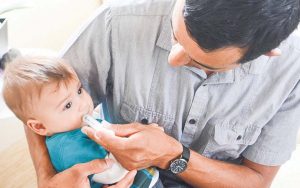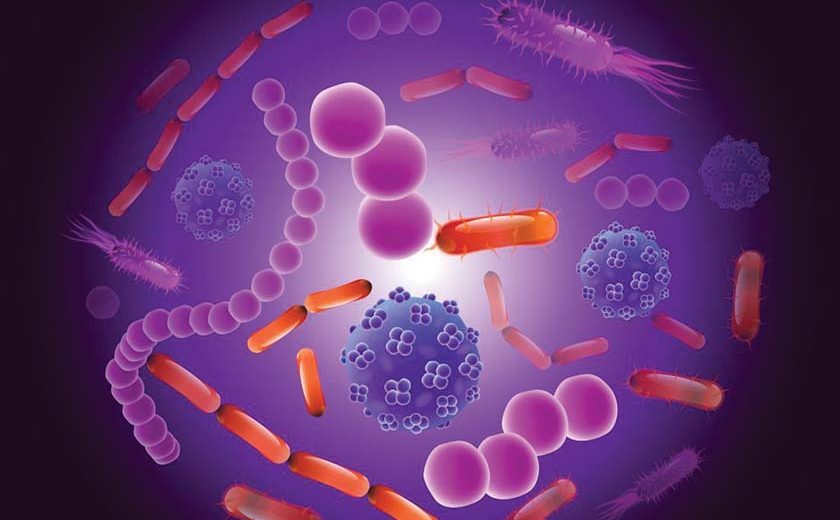Imagine a global healthcare crisis that could cause up to 10 million deaths yearly and more than $100 trillion in healthcare costs by 2050. What could cause such a situation?
The answer is antimicrobial resistance (AMR).(1) This happens when microorganisms (bacteria, fungi, viruses and parasites) change after exposure to antimicrobial drugs (antibiotics, antifungals, antivirals, antimalarials and anthelmintics). Therefore, these treatments become ineffective and the infection sustains, increasing the risk of spread to other people.(2)
 Associate Professor Dr Sasheela Sri La Sri Ponnampalavanar, Consultant Infectious Disease Physician says “The impact of infections due to multidrug resistant bacteria is catastrophic. Without effective antimicrobials, many standard medical treatments will fail or turn into very high-risk procedures. It impedes the achievements of modern medicine, compromising the success of organ transplantation, cancer chemotherapy and major surgeries”. (3)
Associate Professor Dr Sasheela Sri La Sri Ponnampalavanar, Consultant Infectious Disease Physician says “The impact of infections due to multidrug resistant bacteria is catastrophic. Without effective antimicrobials, many standard medical treatments will fail or turn into very high-risk procedures. It impedes the achievements of modern medicine, compromising the success of organ transplantation, cancer chemotherapy and major surgeries”. (3)
“According to The Review on Antimicrobial Resistance, if we do not take prompt action, we threaten the future of our public health. By 2050, the 10 million people that are estimated to die of AMR is more than the current combined mortality rate for cancer, diabetes and road traffic accidents. Asia will face the greatest impact of 4,730,000 deaths by 2050i.
Antibiotics fall under the category of antimicrobial drugs. Resistance happens when germs like bacteria and fungi develop the ability to defeat the drugs designed to kill them. Failure responding to antibiotics could result in prolonged illness, increased cost and even increased risk of deathii.
Associate Professor Dr Sasheela says, “We face a challenge whereby patients have a misconception that antibiotics can solve any infection. However, these drugs are only meant to treat infections caused by bacteria such as streptococcus throat infection, whooping cough and abscesses.(4)
“It has no effect on viral infections such as influenza, common colds and dengue. It is not only ineffective in combating the virus but could also attack the antibiotic sensitive beneficial bacteria in the body promoting the overgrowth of resistance bacteria. Additionally, the resistant bacteria can transfer their resistant genes to the sensitive bacteria in our body. (4)
Challenges Of Antibiotic Resistance
“We are now seeing more infections that do not respond to most antibiotics and some that don’t respond to any antibiotics. To make matters worse, as the rate of global antibiotic resistance increases, the pipeline for new antibiotics is drying up. There are very few options to treat resistant pathogens and there are times where we do not have any options.
“I have personally experienced patients who suffer from AMR, most of them have been exposed to multiple courses of antibiotics. Once a person is exposed to an antibiotic and develops resistance, the resistance can remain in the body for a long time, at times more than a year. These patients are more difficult to treat, they need prolonged intravenous antibiotics therapy, and the outcome is generally poor.
“Antibiotics are also known as “societal drugs”, as antibiotic resistance can pass from bacterium to bacterium, and resistant bacterial infections can pass from one person to another.
“When antibiotics are used in humans or animals, approximately 80 – 90% of the ingested antibiotics are not broken down but passed through the body intact and enter the environment as waste. They retain their ability to affect bacteria and promote antibiotic resistance even after they enter the soil or water as a waste product. Thus, antibiotic use and antibiotic resistance can eventually affect an entire community.
What Can We Do To Prevent Amr?
“If you have a bacterial infection, it is important that you complete the antibiotics as prescribed by your doctor to prevent emergence of resistant bacteria and partial infection treatment.
“Overall, antibiotic use must be controlled. Physicians, pharmacists, and the general public must avoid careless use of these precious drugs. Antibiotics must be prescribed only for bacterial infections and in the proper dose for the correct amount of time.
“Patients should try to stay with one doctor until the infection has been resolved and avoid ‘doctor shopping’. They should also ask their doctor what they have been prescribed and why so. By law, the name of the antibiotics (or any prescribed drug) should be written clearly on the prescription pack along with the dose and duration.
“With antibiotics, you have to complete the entire course of the medication. Do not save antibiotics to use at another time. It’s important to understand not all antibiotics are the same, each has a different mechanism of action. Therefore, it is vital for doctors to identify the site of infection and determine if the infection is likely to be bacterial before prescribing or recommending antibiotics,” she concluded.
The Role Of Immunization
The World Health Organization has highlighted vaccination as an important way to tackle antibiotic resistance. As AMR continues to be pervasive, new classes of antibiotic discovery in the last 25 years are scarce. Assuming recent pipeline initiatives are successful, these new drugs are still highly subjected to resistance. (5)
 Antibiotic Use In Paediatric Patients
Antibiotic Use In Paediatric Patients
Dr Lim Ee Tang, Consultant Paediatrician says, “Not all newborns are born healthy, especially premature ones.(6) Unfortunately, some of them may even contract congenital infections which are usually caused by a bacterium called Group B Streptococcus (GBS).(7)
“This bacterium is found in a mother’s birth canalx and may be passed to the newborn before or during delivery, possible causing complications such as sepsis (blood infection), pneumonia (lung infection) and meningitis (brain infection).(8) Paediatricians usually opt for antibiotics to treat GBS as it is a bacterial infection and without these drugs, the infant may suffer these complications.
Proper Antibiotic Use In Children
“Parents should ensure their children complete the entire course of antibiotics to kill all the bacteria. Never save antibiotics for the next time your child gets sick because each antibiotic is unique in targeting a respective bacterium, having no effect towards a different ailment.
Furthermore, taking the wrong medication can cause the child’s condition to worsen(9), where they experience unpleasant side effects such as an upset stomach, diarrhoea or even skin rash.
“I have had parents and grandparents request for antibiotics even when it is not necessary, thinking that it offers a fast solution. I would take this opportunity to then educate them on the proper and correct use of antibiotics.
“Sometimes the challenge with this is parents are unhappy when they don’t get antibiotics and they then visit another doctor. As a paediatrician, it is important to validate parents’ concerns, letting them know that at the end of the day both parties want what’s best for the child.
“In my practice, I find that fever is a very worrying ailment for parents. In the case where the child is still active, I advise parents to monitor the child for about two to three days. If there’s no improvement, I will ask them to come back for a reassessment in which I perform a blood test or nasal swab depending on the child’s condition. This determines the underlining cause whether bacterial or viral, justifying the need for an antibiotic prescription.

Antibiotic Prescription Guidelines
“The Ministry of Health has produced the National Antibiotic Guideline 2014 as a clear and structured guide for antibiotic prescription. This is a very resourceful tool in identifying the right type of prescription for all patients including infants, children and adolescents. When antibiotics are necessary for children, the dosage prescribed is in accordance to the child’s weight as this would affect the absorption rate.
“As a paediatrician, I usually try to select antibiotics treatment for my patients which are active against a selected group of bacteria, targeting a specific infection, limiting the resistance of the bacterial while sparing the beneficial bacteria. In my practice, I don’t use the same antibiotics throughout the year. I will usually rotate the different groups of antibiotics to limit the spread of bacterial resistance,” he concluded.
Importance Of Vaccinating Children
“I recommend parents to get their children vaccinated as this not only provides immunization but also prevents the need for antibiotics. Inherently, this reduces antibiotic resistance.
The World Health Organization shared that an estimated 11 million days of yearly antibiotic use can prevented if globally, all children were vaccinated against the Streptococcus pneumoniae bacteria (which can cause pneumonia, meningitis and middle ear infections). (10)
Antimicrobial resistance is a serious, debilitating problem that can very much put our public health at a crisis. A global effort involving private and public sectors is required to curb this issue.
The views and opinions expressed in this article are those of the experts mentioned in the article. This educational article is brought to you by GlaxoSmithKline Pharmaceutical Sdn Bhd.
Please consult your doctor or pharmacist for further information.
- The Review on Antimicrobial Resistance (2018).
- Who.int. (2019). Antimicrobial resistance. [online] Available at: https://www.who.int/news-room/fact-sheets/detail/antimicrobial-resistance [Accessed 22 Feb. 2019].
- Euro.who.int. (2019). About AMR. [online] Available at: http://www.euro.who.int/en/health-topics/disease-prevention/antimicrobial-resistance/about-amr [Accessed 22 Feb. 2019].
- Cdc.gov. (2019). What You Can Do | Community | Antibiotic Use | CDC. [online] Available at: https://www.cdc.gov/antibiotic-use/community/about/can-do.html [Accessed 22 Feb. 2019].
- Mayo Clinic. (2019). Antibiotics: Are you misusing them?. [online] Available at: https://www.mayoclinic.org/healthy-lifestyle/consumer-health/in-depth/antibiotics/art-20045720 [Accessed 22 Feb. 2019].
- Chirico G, e. (2019). Antibiotics for the newborn. – PubMed – NCBI. [online] Ncbi.nlm.nih.gov. Available at: https://www.ncbi.nlm.nih.gov/pubmed/19718590 [Accessed 22 Feb. 2019].
- Cdc.gov. (2019). GBS | Fast Facts and Statistics | Group B Strep | CDC. [online] Available at: https://www.cdc.gov/groupbstrep/about/fast-facts.html [Accessed 22 Feb. 2019].
- Cold, F. (2019). Group B Strep in Babies & Newborns. [online] WebMD. Available at: https://www.webmd.com/parenting/baby/baby-group-b-strep#1 [Accessed 22 Feb. 2019].
- Fda.gov. (2019). Combating Antibiotic Resistance. [online] Available at: https://www.fda.gov/ForConsumers/ConsumerUpdates/ucm092810.htm [Accessed 22 Feb. 2019].
- World Health Organization. (2019). Why is vaccination important for addressing antibiotic resistance?. [online] Available at: https://www.who.int/features/qa/vaccination-antibiotic-resistance/en/ [Accessed 22 Feb. 2019].


